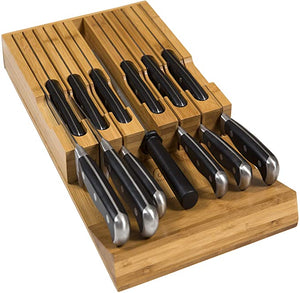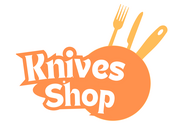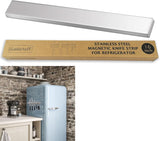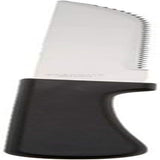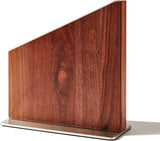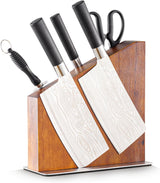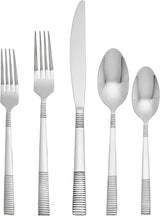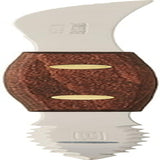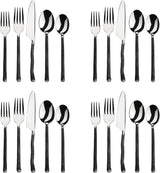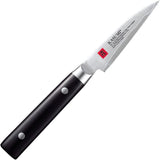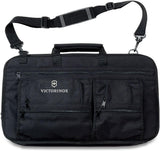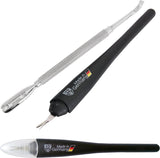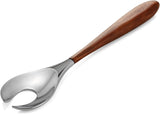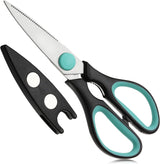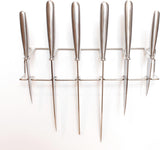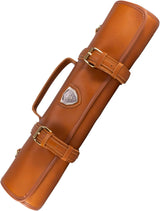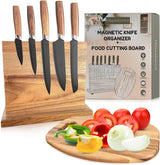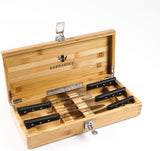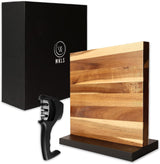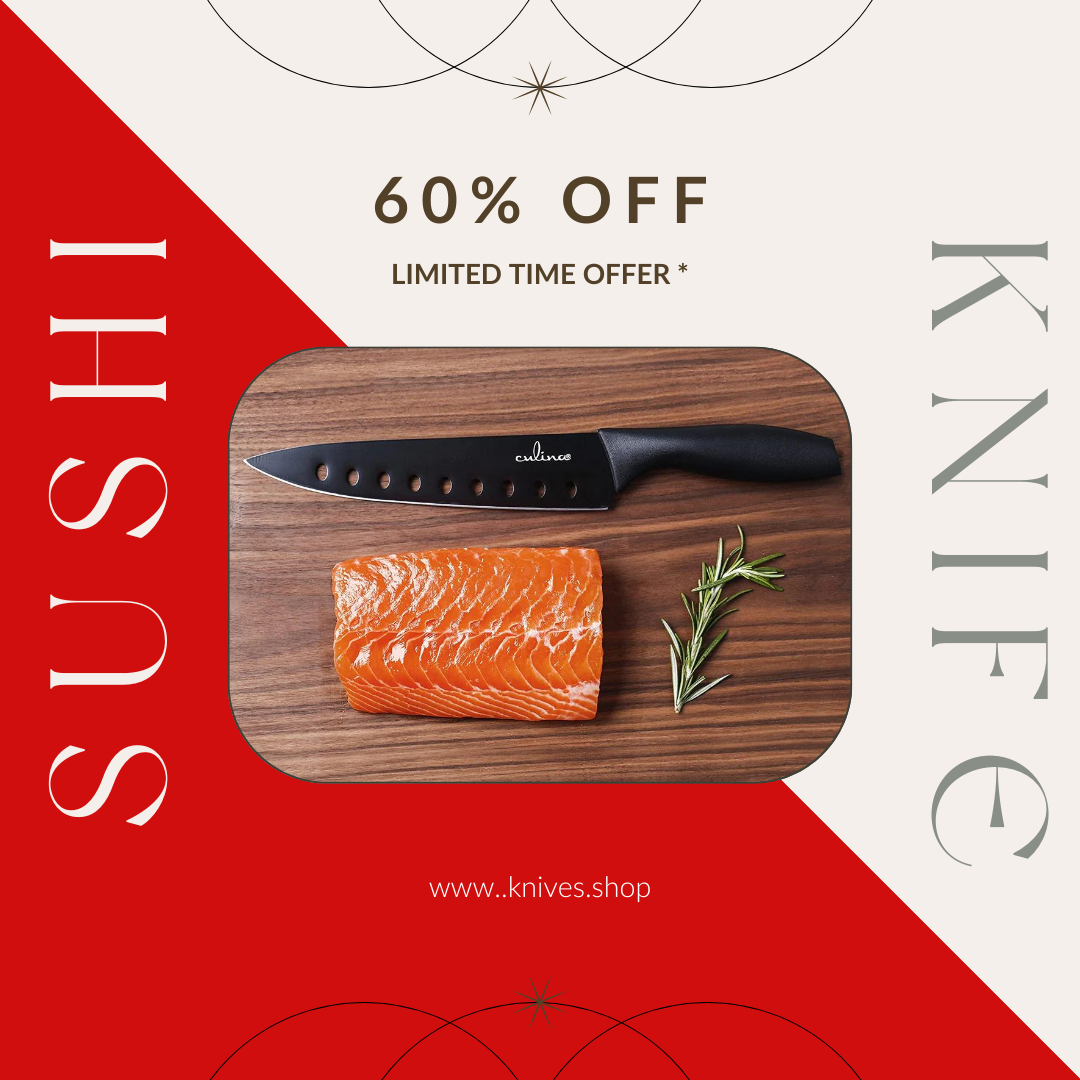Knives are a common and important tool in any household. Although knives come in different shapes, sizes, and forms, there are only a few types of kitchen knives that can handle different tasks in the kitchen.

Below is an extensive guide to some of the most common types of kitchen knives used for cooking and also includes a brief description of how they are used.
Let's see the different parts of a Knife
We'll go through what each portion of a knife is called and what purpose it plays in this section. It's worth noting that this is simply a rundown of the various characteristics you'll find on most basic blades; several specialty knives are built significantly differently.
Point
The blade's most extreme point. This knife can be used to puncture or score food and is typically sharpened to a fine point.
Blade
The blade refers to the portion of the knife that is utilized for cutting. Steel is the most frequent material, however it could also be ceramic, titanium, or even plastic.
Edge
This is the section of the blade that is sharpened and does the majority of the cutting. The fineness with which the knife's edge is ground determines its sharpness, which is determined by both the knife's quality and how often it is sharpened. It can be straight or serrated (like bread knives).
Tip
The tip is the front half of the knife's edge, right beneath the point. It's the section of the blade that's employed for precise chopping and cutting.
Spine
A spine is the blade's blunt upper side, opposite the cutting edge. The blade's strength is determined by the thickness of the spine: the thicker the spine, the more powerful the blade. It's also crucial for the knife's overall balance.
Heel
The lowest edge of the blade, nearest to the bolster and farthest from the tip, is the heel. It's usually the blade's broadest portion. When a chef needs good strength or force to cut through thicker or tougher meals, this area of the edge is most usually used.
Differences between forged knives and stamped knives
Before we get into further detail about the various sorts of knives, it's important to know the distinction between forged and stamped blades. These terms refer to how the knife is made, and each method has its own set of benefits and drawbacks.
Forged knives
A forged knife is one made of a single chunk of metal. A piece of steel is beaten into shape with a heavy press before being polished and sharpened to make a forged knife.After that, the handle is affixed, and the blade is polished and shined. When steel is forged, the shape is changed down to the molecular level, resulting in a blade that is extremely robust. Both the blade and the tang of a forged knife are manufactured from a single continuous piece of steel, making them powerful, durable, and well-balanced.
Stamped knives
A single sheet of steel is used to make stamped knives, which are then carved out into the shape of a blade using a powerful stamping machine. After that, the handle is attached, and the knife is hardened, sharpened, and polished to get a sharp edge and a smooth finish. This style of knife is typically significantly lighter than forged blades since it is made from a thinner piece of steel. Stamped knives are also significantly more economical than forged knives due to the manufacturing process being much cheaper and faster. As a result, they're not as excellent at keeping an edge as forged designs, which means they'll need sharpening more frequently. There's also a higher chance of the handle snapping.
Types of kitchen knives and their uses
Cleaver
They have a flat, rectangle blade and are also known as butcher knives. Designed for specific usage, they are available in a multitude of sizes. They're one of the broadest, heaviest knives, with a hole at the blade's spine where they can be hung up when not in use.

A cleaver is used to cut raw meat into smaller bits before cooking, as either part of the butchery procedure or to split it into small bites before cooking. Because of its massive, hefty shape, it can cut through bone, making it one of the finest knives for raw meat preparation. Because of its large size, this type of knife is usually reserved for raw meat rather than cooked food. Cleavers' broad, flat, heavy surface can also be used to crush cloves of garlic or ginger against a cutting board.
Utility knife
The shape of a utility knife is similar to that of a chef knife, although it is smaller and slimmer. To enable more intricate work, certain utility knives feature a sharp tip that curves up towards the spine. Small foods and vegetables, such as shallots, can be chopped with a utility knife. It has many of the same characteristics as a chef knife, but it is more beneficial for cutting smaller food items since the utility knife allows for more precise cutting. When your cook's knife isn't quite up to the task, reach for a utility knife alternatively.
Chef's knife
It has a lengthy, broad blade with a straight edge, and is sometimes referred to as a chef's or cook's knife. The heel is the broadest part of the shoe, tapering to a highly pointed tip. A chef knife's curved blade allows it to bounce back and forth on a chopping board, making it ideal for chopping and dicing a large number of vegetables at once.

Because of the wide heel area, it can withstand more pressure during heavy-duty chopping operations, making it ideal for cutting thicker or harder vegetables like potatoes, onions, or parsnips. A chef knife is one of the most multifunctional blades in the kitchen, ideal for dicing and mincing duties on a daily basis.
Fillet knife
A filleting knife has a flexible blade and is long and slender. It features a sharply pointed tip and an extremely sharp edge for piercing through skin and complex bone removal procedures. It resembles a boning knife in appearance, but the blade is thinner and more flexible. The thin, flexible blade is ideal for removing bones from fish without hurting the delicate flesh. They vary from ordinary knives in that they cut horizontally rather than vertically through food, allowing chefs to cut around the spine of whole fish to create beautiful fillets. Filleting knives are useful for a variety of fish-related tasks, so they're ideal if you like to experiment with new recipes.
Boning Knife
A boning knife is a thin blade with a razor-sharp edge that tapers to a delicately pointed tip. It's normally rather short (about six inches) and solidly made, though much more flexible blades are available for delicate meat. A boning knife is ideal for cutting meat bones and removing cartilage before cooking to make the perfect joint or cut. Because of the sharp tip and small blade, it's ideal for cutting around the bone without causing damage to the surrounding flesh. The rigid, powerful blade can also be used to sever cartilage. A somewhat harder knife is excellent for deboning hog or beef, whereas a more flexible blade is best for deboning poultry.
Santoku Knife
Santoku knives are useful for cutting fish because of their strong, straight edges and drop-point tips. The pebbling on the smooth side of the blade prevents delicate objects from clinging to the metal, which is very handy for preparing sushi or other raw fish. After cutting, the huge, broad blade can be utilized to scoop up and carry chopped food.
However, santoku knives aren't just for fish: they're also great for cutting up veggies. They're another terrific all-arounder that can be used in place of chef or utility knives.
Butter knives
Although it is frequently placed on the table alongside your fork, this butter knife deserves to be included among other kitchen utensils. The dull edges aren't ideal for slicing fruits and veggies, but they're perfect for spreading butter, jam, or preserves on freshly baked buns.

Sandwich spreaders, which are similar to butter knives but have broader blades and scraping edges, are a reconstructed version of the original butter knife. Scooping and spreading butter mayonnaise, preserves, or a chicken salad is a breeze with this knife.
Carving Knife
A carving knife is a long, slender knife with a sharp point at the end. A carving knife, also known as a slicing knife, is one of the longest kitchen blades available. Because of its tiny width, it causes less drag as it slices through food, resulting in cleaner, more uniform slices.

A carving knife is a perfect tool for serving meats like poultry, hog, lamb, or cattle because it produces thin, tidy, and evenly sized slices. It can also be used to cut through bigger fruits and vegetables that are difficult to cut with smaller or broader blades. Because the long, thin blades are long enough to make flawless slices, they're also great for cutting cakes.
Nakiri
Nakiri knives known as Japanese kitchen knives resemble smaller, slimmer versions of meat cleavers. Nakiri knives have a broad, rectangular shape and almost usually have a hollow, razor-sharp ground edge.
Knives from the Nakiri family are ideal for cutting vegetables. They're also ideal for shredding larger vegetables like cabbages or lettuce, thanks to the deep, flat blade. The acutely sharp edge can also be used to make very even, thin slices, which is ideal for garnishing foods with vegetable ribbons.
Paring Knives
In France, the paring knife is used in small, delicate chores with a kitchen knife. Consider stripping the fruit off the fruit or deseeding and dismantling a hot pepper... After that, just be cautious. The paring knife weighs 2 to 4 pounds and is light and maneuverable in tight situations. These knives are inexpensive additions to any kitchen knife collection, and they might come in handy when you don't want to need a full cutting board to assemble your knife.
Bread knife
Its razor-sharp edges are ideal for slicing loaves without crushing them and laying them flat. Its serrated edges make sharpening a breeze, and even a cheap knife can accomplish it.
Slicing Knife
Slicing knives are similar to carving knives, except they are longer and thinner. They come with either plain or serrated edges; I like plain edges because they create cleaner cuts for larger roasts, fish, or smoked ham. Slicing knives, second only to boning knives in terms of flexibility, are the most versatile kitchen knives. This is a good alternative to carving tools, which are frequently convertible with cutting knives.
Mezzaluna
The mezzaluna, an Italian Halfmoon ax with curved edges, is so named because of its curved edges. Rather than cutting in the same direction, the mezzaluna is tossed across your components without chopping or squeezing. The inspiration for mezzaluna came from the abundance of garlic and garlic mince present in Italian food. As you chop your vegetables, herbs, and garlic into bits with this blade, you may substantially shorten your prep time.
Steak knife
The steak knife is simple to use. They usually have a length of 4 inches and are made of stainless steel. Straight or serrated blades are available. A table knife with a serrated edge and a highly pointed tip is known as a steak knife.

This enables the diner to cut into tough cooked meat, such as steak, with ease at the dinner table. They're now frequently offered alongside burgers and other large meaty dishes. Steak knives are a must-have for any restaurant serving a variety of meat dishes since they are sharp, lightweight, and adaptable.
Tourné knife
The blade of this sort of paring knife is short and curved, resembling a bird's beak. The shape has advantages for the round ingredients or generating round shapes, which may not be visible at first.
Cheese knives
On the cheeses, there are many different textures of cheese to choose from, as well as specialty knife types. If you don't have a knife, you can still cut the cheese with cheese wire cutters.
The various features mentioned above are useful in identifying the different kitchen knives. These must be taken into mind when buying a knife. The costs of the different knives vary and depend on the budget of the buyer. It's best to consider all the options when shopping to find a high-quality knife at an affordable price.
